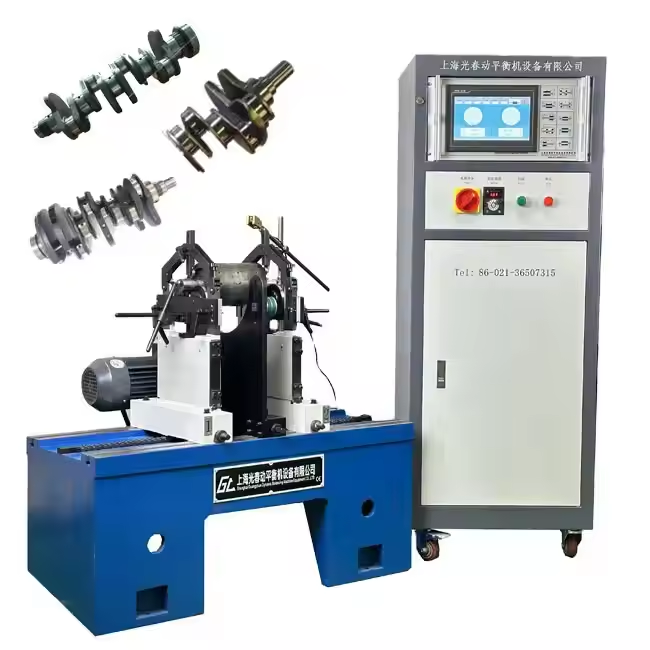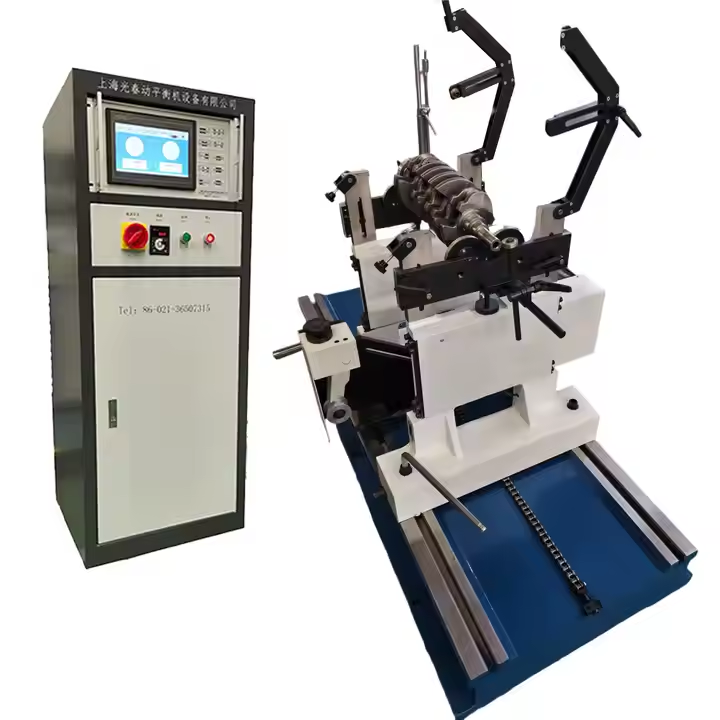Essential Components of Modern Crankshaft Balancing Technology
In the precision-driven world of automotive and industrial manufacturing, achieving perfect balance in rotating components is paramount. Crankshaft balancing machines represent the cornerstone of this pursuit, enabling manufacturers to achieve unprecedented levels of accuracy and reliability in engine performance. As technology continues to evolve, these sophisticated pieces of equipment have become increasingly advanced, offering features that were once considered impossible just a decade ago.
Understanding the critical features that define superior crankshaft balancing machines is essential for manufacturers aiming to maintain competitive edge in today's demanding market. These machines not only ensure optimal engine performance but also contribute significantly to reduced vibration, extended component life, and enhanced overall efficiency of the final product.
Advanced Measurement Systems
High-Precision Sensors and Detection
Modern crankshaft balancing machines employ sophisticated sensor arrays that can detect imbalances down to the minutest detail. These advanced measurement systems utilize state-of-the-art piezoelectric sensors and accelerometers to capture even the slightest variations in rotational movement. The precision of these sensors ensures that manufacturers can identify and correct imbalances that might otherwise lead to decreased engine performance or premature wear.
The latest generation of crankshaft balancing machines features multi-plane measurement capabilities, allowing simultaneous analysis of different sections of the crankshaft. This comprehensive approach to measurement significantly reduces the time required for complete balancing while ensuring superior accuracy across all critical points.
Real-Time Data Processing
Integration of powerful processors and advanced algorithms enables real-time analysis of measurement data. Modern crankshaft balancing machines can process thousands of data points per second, providing immediate feedback on imbalance location and magnitude. This instant analysis capability allows operators to make quick adjustments and verify results immediately, dramatically improving workflow efficiency.

Automated Correction Systems
Precision Material Removal
Leading crankshaft balancing machines feature automated correction systems that precisely remove material to achieve optimal balance. These systems employ advanced drilling or milling mechanisms that can operate with microscopic precision, ensuring that exactly the right amount of material is removed from the correct location. The automation of this process eliminates human error and ensures consistent results across multiple components.
Intelligent Correction Planning
Modern machines incorporate sophisticated software that calculates the optimal correction strategy based on measured imbalance data. These systems consider multiple factors, including material properties, geometric constraints, and specified tolerance levels, to determine the most efficient correction approach. The result is a faster, more accurate balancing process that maintains the structural integrity of the crankshaft.
User Interface and Control Systems
Intuitive Operation
Today's crankshaft balancing machines feature user-friendly interfaces that simplify operation while providing access to advanced functionality. Touch-screen displays, clear visual indicators, and intuitive menu systems enable operators to quickly master machine operation and achieve consistent results. These interfaces often include multi-language support and customizable workspace layouts to accommodate diverse operational requirements.
Remote Monitoring Capabilities
Integration of Industry 4.0 technologies allows modern crankshaft balancing machines to provide remote monitoring and control capabilities. Operators and supervisors can access machine status, performance data, and historical records from anywhere in the facility or even off-site. This connectivity enables better resource planning, predictive maintenance, and quality control tracking.
Safety and Protection Features
Advanced Safety Systems
Leading manufacturers prioritize operator safety through comprehensive protection features in their crankshaft balancing machines. These include automatic emergency stops, protective enclosures with interlocking systems, and advanced motion control that prevents unexpected movement during setup or maintenance. Additional safety features often include light curtains and pressure-sensitive floor mats to ensure operator protection in all circumstances.
Component Protection
Sophisticated software algorithms and mechanical systems work together to protect valuable crankshafts during the balancing process. These systems monitor operating parameters in real-time and can automatically halt operations if unusual conditions are detected. This proactive approach prevents damage to both the workpiece and the machine itself, reducing costly errors and downtime.
Calibration and Maintenance Features
Self-Calibration Systems
Advanced crankshaft balancing machines incorporate self-calibration features that ensure consistent accuracy over time. These systems can automatically verify and adjust measurement parameters, compensating for environmental changes or wear-related variations. Regular self-calibration reduces the need for manual intervention and helps maintain optimal performance levels.
Preventive Maintenance Monitoring
Modern machines include sophisticated monitoring systems that track component wear, usage patterns, and performance metrics. This data enables predictive maintenance scheduling, helping prevent unexpected downtime and ensuring consistent accuracy. Many systems can automatically generate maintenance alerts and detailed service reports, simplifying the maintenance management process.
Frequently Asked Questions
What accuracy levels can modern crankshaft balancing machines achieve?
Modern crankshaft balancing machines can achieve accuracy levels as fine as 0.1 gram-millimeters, depending on the specific model and configuration. This extreme precision ensures that balanced crankshafts meet the most demanding specifications for high-performance engines.
How long does the typical balancing process take?
The balancing process duration varies depending on the crankshaft size and initial imbalance, but most modern machines can complete the measurement and correction cycle within 15-30 minutes. Advanced automation features have significantly reduced processing times compared to older equipment.
What maintenance requirements do these machines have?
While specific maintenance requirements vary by manufacturer, most crankshaft balancing machines need regular calibration checks, bearing inspection, and sensor verification. Modern machines with predictive maintenance features typically require less frequent manual intervention, with many maintenance tasks automated or simplified through built-in diagnostic systems.




